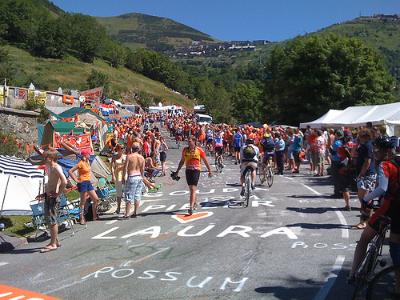 The Tour de France takes over the country each year in July, and although most French people watch the coverage on TV rather than going out of their way to see it in person I think there are definitely worse ways to spend an afternoon or even a whole day than by picnicking along the Tour’s route and waiting for the riders to go by.
The Tour de France takes over the country each year in July, and although most French people watch the coverage on TV rather than going out of their way to see it in person I think there are definitely worse ways to spend an afternoon or even a whole day than by picnicking along the Tour’s route and waiting for the riders to go by.
If you’ve scored cheap international airfare and you’ll be in France in July 2009, you’ll want to figure out whether the race is going to be anywhere near you during your trip; and if it is, you might want to check it out up close and personal. Here, then, are my suggestions for the best places to watch the 2009 Tour de France.
Unfortunately, easily the best stage to see any Tour de France – the iconic Alpe d’Huez, which even the pro cyclists themselves recommend if you’ve only got one shot at seeing this famous race – isn’t in this year’s route. I know, I know – but there are other great stages in the 2009 route.
In general, the things to know about this or any cycling event are that while the carnival-like atmosphere is typically reserved for the starting or finishing towns of any given stage, the riders will be zipping through them (and other towns along the flat parts of any day) so quickly that you won’t get to see them much. If you want to just soak up the atmosphere, then that’s fine – but if you actually want to see the cyclists for more than a few seconds then your best bet is to pick a spot alongside one of the mountains where you can watch them in what feels like slow motion as they slog their way uphill.
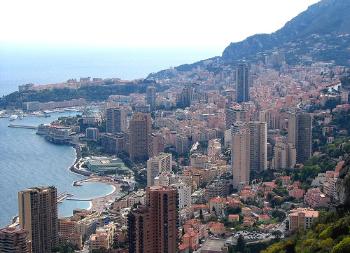 Stage 1: Monaco, July 4 – The race’s first stage is historic because it’s the first time it’s begun in the municipality of Monaco, but beyond that the first day of the Tour de France is always a fun one to see. It’s a time trial, which means that each rider will go off alone and try to complete the same course in the quickest time, and this one starts and finishes in Monaco; the city-state gets the benefit of being both a start town and a finishing town! Not only that, Stage 2 departs from Monaco on July 5 as well, so if you’re still in the area you can see the race yet again before it heads west. Monaco is an expensive place to stay any time of the year, but it’s bound to be even more so in the days leading up to the Tour start. You might want to stay in a nearby French town and take the train into Monte Carlo early on race day.
Stage 1: Monaco, July 4 – The race’s first stage is historic because it’s the first time it’s begun in the municipality of Monaco, but beyond that the first day of the Tour de France is always a fun one to see. It’s a time trial, which means that each rider will go off alone and try to complete the same course in the quickest time, and this one starts and finishes in Monaco; the city-state gets the benefit of being both a start town and a finishing town! Not only that, Stage 2 departs from Monaco on July 5 as well, so if you’re still in the area you can see the race yet again before it heads west. Monaco is an expensive place to stay any time of the year, but it’s bound to be even more so in the days leading up to the Tour start. You might want to stay in a nearby French town and take the train into Monte Carlo early on race day.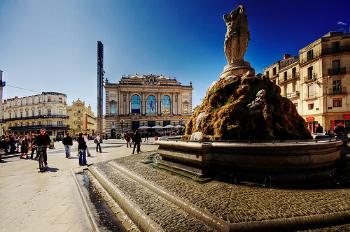 Stage 4: Montpellier, July 7 – A team time trial isn’t always on the itinerary for the Tour de France, but this year it is. So whereas an individual time trial like the Monaco start sees each rider going on his own, a team time trial has the entire team racing together to beat the clock. The fact that the start and finish are both in the charming town of Montpellier makes this an easy stage to be a spectator – not to mention that Montpellier is easy to access via public transport, unlike the mountain passes of the Alps or Pyrenees. And for photographers with a quick shutter finger, you’ll be able to capture an entire team riding together in a line, pursuing one goal. This course is a bit hilly, so you won’t see the riders going full tilt the whole time, but it’s an interesting spectacle to see a whole team together with no other riders around – and because there isn’t always a team time trial in the Tour de France, it’s worth it to try to catch this one.
Stage 4: Montpellier, July 7 – A team time trial isn’t always on the itinerary for the Tour de France, but this year it is. So whereas an individual time trial like the Monaco start sees each rider going on his own, a team time trial has the entire team racing together to beat the clock. The fact that the start and finish are both in the charming town of Montpellier makes this an easy stage to be a spectator – not to mention that Montpellier is easy to access via public transport, unlike the mountain passes of the Alps or Pyrenees. And for photographers with a quick shutter finger, you’ll be able to capture an entire team riding together in a line, pursuing one goal. This course is a bit hilly, so you won’t see the riders going full tilt the whole time, but it’s an interesting spectacle to see a whole team together with no other riders around – and because there isn’t always a team time trial in the Tour de France, it’s worth it to try to catch this one.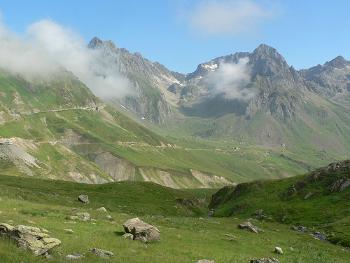 Stage 9: Col d’Aspin or Col du Tourmalet, July 12 – These are the first real mountains of the 2009 Tour, and although this stage isn’t likely to be definitive (it’s too early in the race and the mountains come long before the finishing line) it could be a great opportunity to check out the race favorites early on. Both the Col d’Aspin (pronounced dass|PAN) and the Col du Tourmalet (pronounced tor|mah|LAY) are famous and great mountain passes in the Pyrenees, so either one you can reach is bound to be not only a good spot to watch the race but also popular with other spectators. The Tourmalet is the higher of the two, and because it comes after the Col d’Aspin it could be more interesting to see the race there, but either one will likely be good.
Stage 9: Col d’Aspin or Col du Tourmalet, July 12 – These are the first real mountains of the 2009 Tour, and although this stage isn’t likely to be definitive (it’s too early in the race and the mountains come long before the finishing line) it could be a great opportunity to check out the race favorites early on. Both the Col d’Aspin (pronounced dass|PAN) and the Col du Tourmalet (pronounced tor|mah|LAY) are famous and great mountain passes in the Pyrenees, so either one you can reach is bound to be not only a good spot to watch the race but also popular with other spectators. The Tourmalet is the higher of the two, and because it comes after the Col d’Aspin it could be more interesting to see the race there, but either one will likely be good.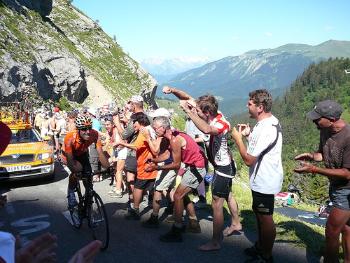 Stage 17: Col de la Colombiere, July 22 – Because this stage comes closer to the end of the Tour and this mountain pass is the final one of Stage 17, the Col de la Colombière (pronounced kohl|umm|bee|EHR) is set up to be particularly interesting. It comes at the end of what will be a long day of riding over several very high Alpine mountains, so the big move in the race could come earlier, but the Colombiere climb is well-known as a tough one (especially as there’s very little downhill recovery time from the previous climb before the road points skyward again). Spectators on the Colombiere are likely to see riders straggling in for hours after the winner crosses the finish line.
Stage 17: Col de la Colombiere, July 22 – Because this stage comes closer to the end of the Tour and this mountain pass is the final one of Stage 17, the Col de la Colombière (pronounced kohl|umm|bee|EHR) is set up to be particularly interesting. It comes at the end of what will be a long day of riding over several very high Alpine mountains, so the big move in the race could come earlier, but the Colombiere climb is well-known as a tough one (especially as there’s very little downhill recovery time from the previous climb before the road points skyward again). Spectators on the Colombiere are likely to see riders straggling in for hours after the winner crosses the finish line.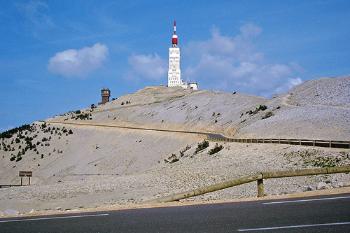 Stage 20: Mont Ventoux, July 25 – Mont Ventoux (pronounced vohn|TOO) has been described as a moonscape; it’s distinctive on the horizon in Provence, and because it’s a one-way trip up to this mountaintop finish you get to see both a mountain stage and a finish line in one stop. This finish is a big hairy deal whenever it’s included in a Tour route, but it’s exceptionally interesting this year as it’s the penultimate stage (usually that’s another individual time trial which is typically much less dramatic). Add to this the fact that Lance Armstrong, who’s returned to racing in 2009 after three years’ retirement and seven Tour victories, has his eye on the Ventoux as a place where he’d really like to cross the finish line first and you’ve got a stage everyone already has their eye on. No matter who’s in the lead coming into Stage 20, he’ll still have his work cut out for him on this day. What this means for spectators is that it could turn out to be one of the most exciting points from which to watch the 2009 Tour – and also one of the most crowded. Get to the mountain early (I guarantee people will be camping out the night before, if not days in advance) to make sure you get a good spot.
Stage 20: Mont Ventoux, July 25 – Mont Ventoux (pronounced vohn|TOO) has been described as a moonscape; it’s distinctive on the horizon in Provence, and because it’s a one-way trip up to this mountaintop finish you get to see both a mountain stage and a finish line in one stop. This finish is a big hairy deal whenever it’s included in a Tour route, but it’s exceptionally interesting this year as it’s the penultimate stage (usually that’s another individual time trial which is typically much less dramatic). Add to this the fact that Lance Armstrong, who’s returned to racing in 2009 after three years’ retirement and seven Tour victories, has his eye on the Ventoux as a place where he’d really like to cross the finish line first and you’ve got a stage everyone already has their eye on. No matter who’s in the lead coming into Stage 20, he’ll still have his work cut out for him on this day. What this means for spectators is that it could turn out to be one of the most exciting points from which to watch the 2009 Tour – and also one of the most crowded. Get to the mountain early (I guarantee people will be camping out the night before, if not days in advance) to make sure you get a good spot.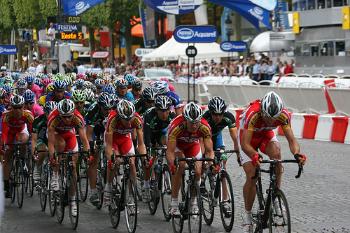 Stage 21: Paris, July 26 – It’s the rare Tour de France when things aren’t already well decided by the final day’s run into Paris, so while seeing the cyclists race back and forth along the Champs-Elysees isn’t necessarily exciting from a racing standpoint it’s still Paris! This can be the ideal stage to view for the casual observer, because you can catch a bit of the excitement without going out of your way (or needing to rent a car), and may even get to see the elaborate trophy presentations after the race is done. It’s one of only a few times each year when the Champs-Élysées is closed to traffic, so it’s definitely something to see.
Stage 21: Paris, July 26 – It’s the rare Tour de France when things aren’t already well decided by the final day’s run into Paris, so while seeing the cyclists race back and forth along the Champs-Elysees isn’t necessarily exciting from a racing standpoint it’s still Paris! This can be the ideal stage to view for the casual observer, because you can catch a bit of the excitement without going out of your way (or needing to rent a car), and may even get to see the elaborate trophy presentations after the race is done. It’s one of only a few times each year when the Champs-Élysées is closed to traffic, so it’s definitely something to see.
>> For more information, see these Tour de France Tips for Spectators, this complete list of the 2009 Tour de France stages and a look at what makes the 2009 Tour route distinctive.